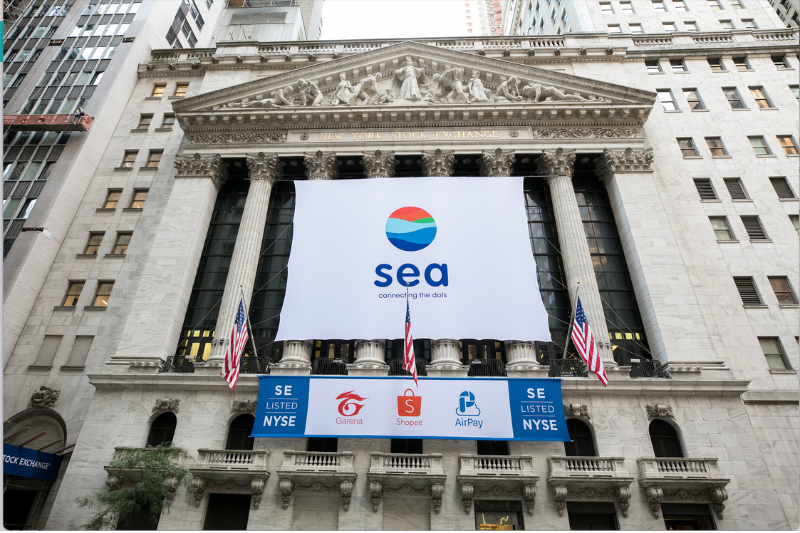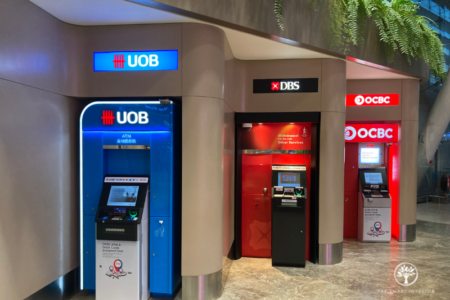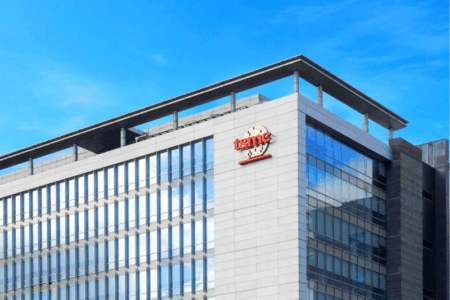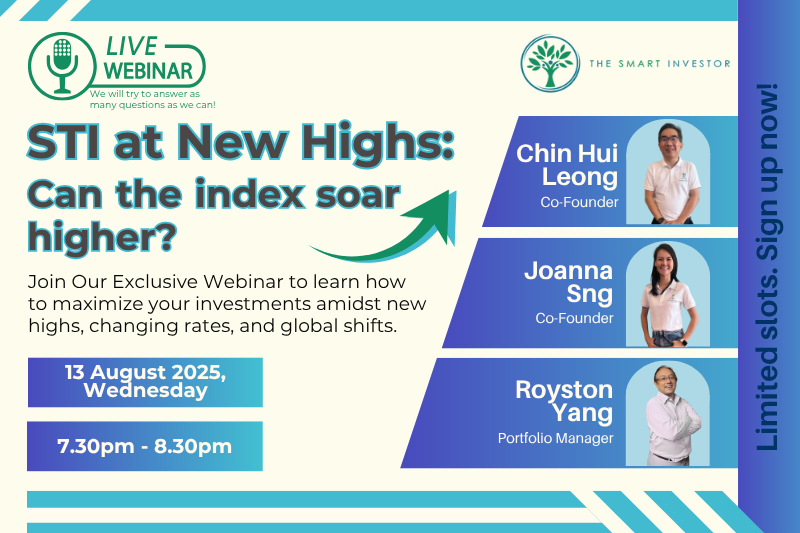Sea Limited (NYSE: SE) has become one of the most prominent tech names in Southeast Asia with its anchor business, Shopee, together with Garena (online game development) and Monee (previously SeaMoney, digital finance services).
Since its listing on the New York Stock Exchange (NYSE) in October 2017, the stock has endured a long, volatile journey, enjoying lofty peaks and disheartened retreats.
So, how much would an investment of US$10,000 on its initial public offering (IPO) be worth today?
Sea’s 2017 IPO
On 20 October 2017, Sea Limited made its IPO at US$15 per share, giving the company a market capitalisation of about US$4.9 billion.
At that time, Garena was the primary revenue generator, Shopee was in its growth phase and SeaMoney had only recently commenced its journey in fintech.
Investor sentiment was cautious, but investors were intrigued by the fast growth of the digital economy in Southeast Asia.
A US$10,000 investment at listing would have gotten you approximately 666 shares of Sea.
How the Investment Has Performed
Sea’s share price has taken investors on a volatile ride.
Driven by pandemic-era heightened demand for both online shopping and gaming, the shares reached an all time high of US$372.70 in October 2021.
At that time, an initial investment of US$10,000 would have risen to about US$248,000, an increase of 2,380%.
When economies reopened and growth slowed, momentum tapered off.
Sea’s shares plunged more than 80% from their peak at one point, though they have since recovered partially.
As of 15 October 2025, the shares are priced at US$180.69.
Those same IPO shares would now be worth about US$120,340, a 1,100% total return since listing.
Despite the correction, Sea has outperformed major US indices.
Over that same time frame, the S&P 500 has risen about 145%, and the Nasdaq Composite has gone up by about 190%.
This translates to a compound annual growth rate (CAGR) of nearly 37% for Sea since its IPO.
Shopee: An Underdog to Regional Leader
Shopee has become the dominant e-commerce platform in Southeast Asia and now accounts for about 50% of gross merchandise value (GMV) across the region, according to Momentum Works data.
Shopee’s GMV expanded 25% year-on-year in 1H2025, exceeding expectations.
Segment revenue from e-commerce rose 552.5% from US$2.2 billion in 2020 to US$14.1 billion in the 12 months ending June 2025.
This translates to a CAGR of nearly 52%, driven by Shopee’s growing share of Southeast Asia’s digital retail economy.
Improvements in logistics, advertising and live-stream commerce have driven Shopee’s monetisation rate from roughly 11% to about 15%.
While online retail sales only make up approximately 10% of total sales in Southeast Asia, there is plenty of room for continued growth ahead.
Garena: Free Fire’s Comeback
Garena’s fortunes have ebbed and flowed with its flagship game, Free Fire.
When India banned the game in 2022, in-game spending fell sharply, causing adjusted EBITDA for the Digital Entertainment segment to drop from US$2.8 billion in 2021 to US$1.3 billion in 2022.
Since then, spending has begun to recover as user engagement has improved.
Digital entertainment revenue grew modestly, from US$2.02 billion in 2020 to approximately US$2.07 billion in the 12 months ending June 2025.
That said, segment operating profit fell 58.9%, from US$2.5 billion in 2021 to US$1.03 billion over the same period.
Management expects bookings growth of more than 30% in 2025, as new collaborations with Squid Game and Naruto Shippuden have yielded results.
Despite the rebound, Garena still relies heavily on Free Fire for earnings, leaving profits sensitive to gaming trends and user engagement.
Monee: A Build Up of Fintech Momentum
Monee, formerly known as SeaMoney, is now the fastest growing division within the company.
Revenue from digital financial services was approximately 70% YoY in 2Q2025, whilst its 90-day non-performance loan ratio remains low at 1.0%.
For some historical context, revenue from digital financial services surged 4,850%, from US$61 million in 2020 to US$3.02 billion in the 12 months ending June 2025.
Segment profitability also swung sharply, from an operating loss of US$520 million in 2020 to an operating profit of US$1.03 billion over the same period.
Challenges Along the Way
Sea’s fast expansion has not been without some hiccups along the way.
The company suffered deep losses in the years spent building out the Shopee ecosystem and extending Garena’s reach.
Competition from Lazada and TikTok Shop intensified, while ongoing regulatory uncertainty piled more pressure on Sea.
The Free Fire ban in India caused a 40% decrease in bookings in 2022, while Shopee’s push overseas incurred increased marketing and logistics costs.
What We Can Learn As Investors
Sea’s story captures both the risks and rewards of investing in high-growth disruptors.
Investors who bought and held the stock since 2017 have multiplied their capital more than tenfold, though not without enduring sharp drawdowns along the way.
This reminds investors that both conviction and patience are as important as, if not more important than, finding the right company.
Get Smart: Time, Not Market Timing
A US$10,000 investment in the Sea IPO would have now been worth about US$120,000, after peaking around US$248,000 at its height.
The lesson is clear: time in the market beats timing the market.
For long-term investors, Sea’s rise and fall highlight the value of understanding a company’s fundamentals.
Staying invested through market swings can make a big difference to long-term returns.
It also shows how external factors, such as elections or shifting sentiment, can move share prices in the short term.
Don’t let market uncertainty hijack your financial dreams. While headlines scream gloom, 5 Singapore companies have been quietly building wealth and paying reliable dividends. You’re probably overlooking them. Discover these resilient giants and their secrets to sustained income, even through global storms. Click here to download your free report now and secure your financial future!
Follow us on Facebook, Instagram and Telegram for the latest investing news and analyses!
Disclosure: Joseph does not own shares in any of the companies mentioned.





